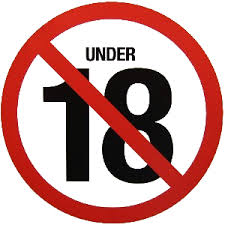Translators generally work in the field because they enjoy translating and, at the same time, can earn a living at it. Translation – like many other liberal professions – is a purpose-driven activity that demands constant decision making on a daily basis, with the concomitant risk that a wrong decision can have a negative impact on the translator in terms of economics and reputation.
Freelance translators are especially vulnerable to financial risks because they are often one-person businesses in which one slow-paying or non-paying client can cause cash flow problems, wreaking tremendous havoc on their business and personal finances.
While there’s no way (other than asking for full payment in advance) to be 100% sure that a potential client will be a reliable payer or not, there are a number of steps you can take that will minimize your financial risk when considering a project from a client.

1. Know the client. You want all the details you can find: full company name, address, telephone number, email and Tax ID. Emails from sites like Gmail, Yahoo, hotmail and so on are a warning flag: legitimate businesses have their own websites and their own email addresses. You can use Google Maps to get a look at their address, which should appear appropriate for a business. You’ll also want to check this information against the purchase order (more than that below).
2. Explore the client’s payment history. There are several sites that have information about translation agencies’ payment reliability. One of the most popular is ProZ’s Blue Board, which is available at www.proz.com/blueboard/. On the Blue Board, ProZ members rate the client from 1-5 and may leave a short comment about their experience with the agency. Another excellent option is Payment Practices at www.paymentpractices.net. The annual subscription fee is $19.99/€19.99, but you can check out the service with its seven-day free trial. Subscribers can check the PP database of more than 11,000 translation agencies for responses and comments, and use its PP Reliability Score and Translator Approval Scores, along with translator feedback, to decide whether to work for a particular client. Translation Ethics, at translationethics.blogspot.com.es publishes a blacklist of agencies, scammers, non-payers and low-payers. For a list of email addresses related to suspected scammers (payment issues are not addressed), see www.translator-scammers.com, which lists over 3,800 suspected scammers and warns translators about the latest trends in scamming. Finally, Black Sheep, at www.linkedin.com/grp/home?gid=4871593, has an active internet community that shares information on agencies with payment issues.
3. Look at the files provided for translation. Examine them thoroughly and identify the steps you will need to take in order to deliver a quality translation to your client on time. These steps include: making an accurate word count (again, to be checked against the PO), estimating any significant research to be done before the translation, format conversions (if required) and any page formatting to be taken care of after the translation itself is finished. If extensive pre- or post-translation work is needed, note this for inclusion in the quote.
4. Agree on a delivery time with your client. Remember, the translator is doing the actual work, and is the best person to estimate how long it will take to do the translation and any formatting to the professional standard required. Experienced translators know what volume they can produce on a given day, and they should not allow clients to push them into making an unrealistic time commitment, no matter how “urgent” the project is. Because translation has become a globalized industry, it is essential to specify the time zone…and to take it into account when calculating the time the translator will need to complete the project.
5. Agree on a rate for the project. Do not assume that the rate proposed by the agency is to be paid for all words; many agencies expect discounts on words or phrases that repeat within a document or set of documents, or are already in a translation memory supplied by the client to the translator. Rates vary widely across languages, times zones and geographical locations. Don’t forget to establish when and how the job is to be paid: upon delivery, or 30, 45 or 60 days after reception of the invoice via check, bank transfer, PayPal, etc. Some agencies will accept invoices only on the last day of the month and calculate payment from that date, so this should be clarified before accepting the project.
6. Get a purchase order BEFORE beginning work. This is highly advisable with all clients, but absolutely essential when working with a new client. A purchase order must include all the information listed in the preceding points – client’s full business name, address, telephone/fax number, tax ID and email, job description (ID number, file number, project name, etc.), documents to be translated, source and destination languages, services to be provided (translation, editing, formatting, transcription, etc.), delivery format and deadline (date and time, with time zone specified), rate agreed on – including any discounts for matches/fuzzies if using a CAT tool) – and exact payment terms.
A legitimate client will have no problem providing you with all of the above; after all, it’s in both the client’s and the translator’s interest to have the project’s responsibilities and obligations spelled out so that everyone knows his job and what is required.
Bad clients, scammers and non-payers will often give you the runaround when you ask for a PO, change the project conditions (rate or deadline) after you’ve begun translating, or offer to issue one after the project is delivered. There is no logical reason for a translator to accept this behavior, as it simply increases risk and reduces guarantees for the translator while doing the exact opposite for the client, who is seeking to protect himself at the translator’s expense.
Freelance translators need to work, but this need must not blind them to another, greater need: to be able to collect, as agreed on, the money earned.





